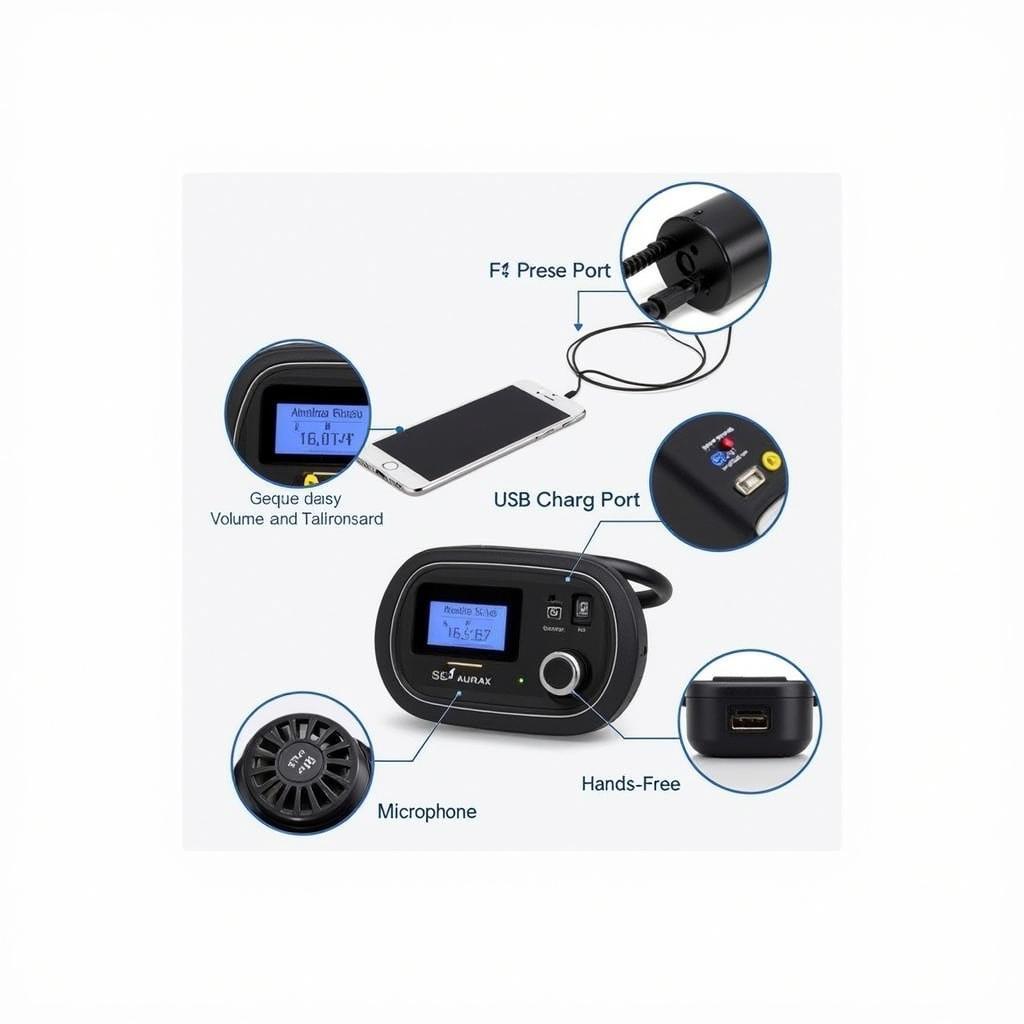The persistent glow of your brake warning light can be a nagging worry. Understanding what causes brake warning light to stay on is crucial for your safety and the longevity of your vehicle. This article dives deep into the common reasons, diagnostic approaches, and even touches on remote software solutions that might address the issue.
If you see the 1999 volvo s70 seat belt warning light cover illuminated, that’s a different issue altogether. Addressing this warning light promptly is paramount to ensuring your safety and the proper functioning of your braking system. From low brake fluid levels to more complex issues like ABS malfunctions, we’ll explore the potential culprits and guide you towards effective solutions.
Common Causes of a Persistent Brake Warning Light
Several factors can trigger the brake warning light. Identifying the root cause is the first step towards rectifying the problem. Here are some of the most common culprits:
- Low Brake Fluid: This is often the most straightforward reason. A leak in the brake lines or worn brake pads can deplete the fluid level, activating the warning light.
- Worn Brake Pads: Brake pads have wear indicators that trigger the warning light when they reach a critical thickness. Replacing the pads usually resolves this.
- Faulty Brake Sensor: The sensor that monitors brake fluid levels or pad thickness can malfunction, sending a false signal.
- Parking Brake Engaged: Sometimes, the simple act of forgetting to disengage the parking brake can illuminate the warning light.
- ABS Issues: Problems within the Anti-lock Braking System (ABS), such as a faulty wheel speed sensor or a malfunctioning ABS module, can trigger the light.
- Master Cylinder Problems: The master cylinder is the heart of the braking system. If it’s leaking or malfunctioning, the brake warning light will likely come on.
Diagnosing the Problem
Diagnosing the cause of a persistent brake warning light can range from simple visual inspections to more advanced diagnostic tools.
Visual Inspection
Start by checking your brake fluid reservoir. If it’s low, top it off and monitor the level. A rapid drop indicates a leak that needs immediate attention. Inspect your brake pads for wear. If they appear thin, you likely need replacements.
Using Diagnostic Tools
More complex issues, like ABS faults, require specialized diagnostic tools. These tools can read error codes from the vehicle’s computer, pinpointing the problem area. Modern vehicles often require remote software solutions for diagnostics and programming.
Remote Software Solutions for Brake Issues
In some cases, the brake warning light may be related to software glitches within the vehicle’s control modules. Remote software solutions, including updates and reprogramming, can address these issues without physical intervention. This advanced technology allows technicians to diagnose and fix certain brake-related problems remotely, saving time and potentially reducing repair costs.
Benefits of Remote Diagnostics
- Convenience: Diagnostics and repairs can be performed without bringing the car to a shop.
- Speed: Remote software solutions can often be implemented faster than traditional methods.
- Cost-Effectiveness: In certain situations, remote repairs can be more affordable than physical repairs.
“Remote diagnostics are revolutionizing the automotive repair industry,” says John Smith, Lead Automotive Systems Engineer at AutoTech Solutions. “They offer unprecedented convenience and efficiency, particularly for software-related issues.”
Addressing the Root Cause
Once the cause is identified, the appropriate repair can be implemented. This could involve anything from topping off brake fluid and replacing brake pads to more complex repairs like replacing a faulty ABS module or repairing a brake line leak.
When to Seek Professional Help
While some brake-related issues can be addressed by DIY enthusiasts, complex problems require professional expertise. If you’re uncomfortable working on your braking system, or if the problem persists after basic checks, seek the assistance of a qualified mechanic.
Conclusion
Understanding what causes brake warning light to stay on empowers you to take the right steps towards ensuring your safety. From simple checks like fluid levels and pad thickness to utilizing advanced diagnostic tools and remote software solutions, addressing the issue promptly is essential. Remember, a properly functioning braking system is paramount to your safety on the road. Don’t ignore that persistent warning light; address it head-on for peace of mind and safe travels.
FAQ
-
What should I do if my brake warning light comes on while driving? Safely pull over as soon as possible and assess the situation. Check your brake fluid level and inspect your brakes. If you’re unsure, call a tow truck.
-
Can I drive with the brake warning light on? It’s not recommended. Driving with a persistent brake warning light can be dangerous. Have the problem diagnosed and repaired as soon as possible.
-
How often should I check my brake fluid level? It’s a good idea to check your brake fluid level at least once a month.
-
How long do brake pads typically last? Brake pad lifespan varies depending on driving habits and conditions, but they typically last between 25,000 and 70,000 miles.
-
What is the cost of replacing brake pads? The cost of brake pad replacement varies depending on the vehicle make and model, but it typically ranges from $150 to $300 per axle.
-
Can low brake fluid damage my car? Yes, low brake fluid can lead to air in the brake lines, reducing braking effectiveness and potentially damaging components like the master cylinder and calipers.
-
What is the purpose of the ABS system? The Anti-lock Braking System (ABS) prevents wheel lockup during hard braking, allowing you to maintain steering control.


